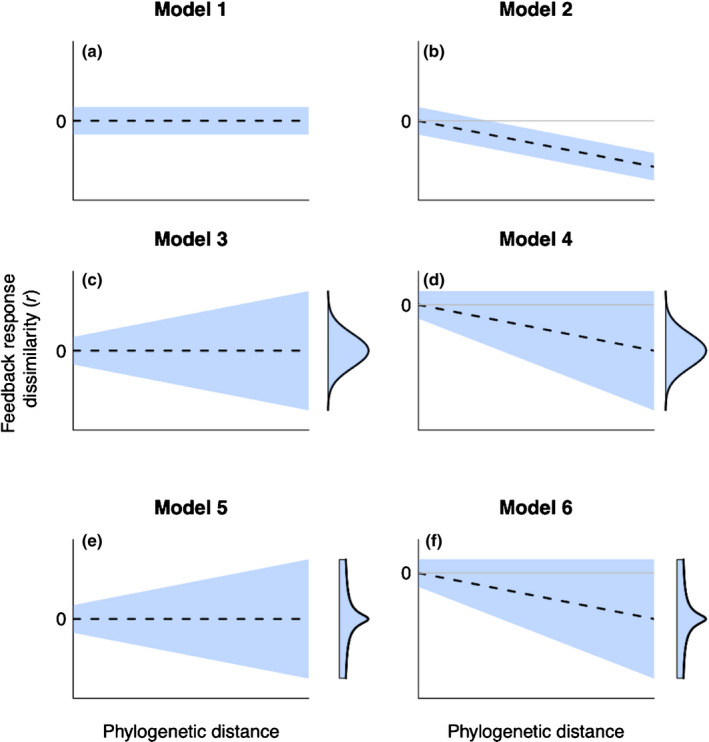Fig. 1.

Phylogenetic signals arise when closely related species tend to be more similar (less dissimilar) than distantly related species. In (a–f) dashed lines show mean trend in dissimilarity with increasing phylogenetic distance (where dissimilarity can be in a positive or negative direction) and blue shading indicates variation in dissimilarity around the mean. In (a), (dis)similarity among species is the same, on average, regardless of phylogenetic distance, meaning there is no phylogenetic signal due to no change in mean dissimilarity and no change in variation with increasing phylogenetic distance. Panel (b) shows a phylogenetic signal arising from a directional trend in mean dissimilarity with increasing phylogenetic distance, resulting in more distantly related species being more dissimilar to each other (here, in a negative direction) relative to closely related species. In both (c) and (e), a phylogenetic signal arises due to an increase in variance but no directional trend, with more distantly related species being more likely to differ from each other in either direction relative to more closely related species. In (c), continuous gradual divergence over time leads to normally distributed responses while in (e), occasional major co‐evolutionary shifts lead to a heavy‐tailed distribution of responses. Panels (d) and (f) show a phylogenetic signal arising due to both an increase in variance and a directional trend, with a normally distributed (d) or heavy‐tailed (f) distribution of responses.
